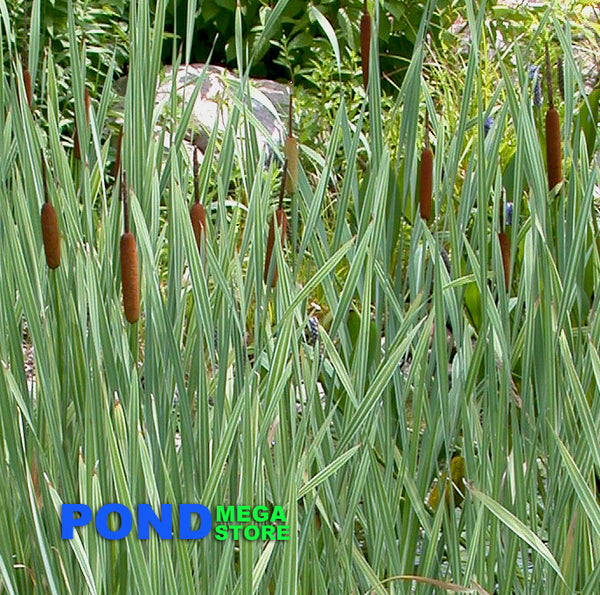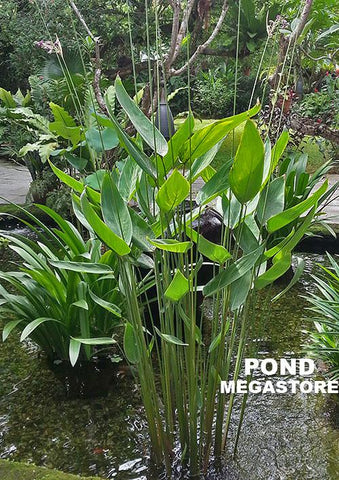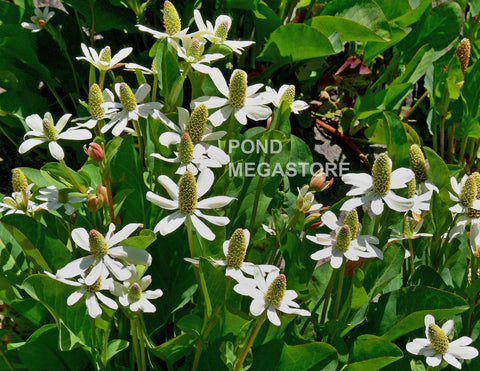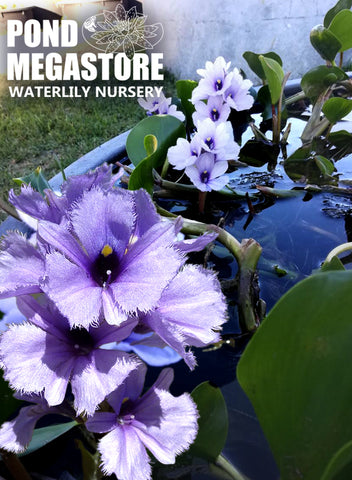Variegated Cattails (Typha Latifolia Variegata)are a striking form of the common cattail (although not as aggressive) with variegated, strap-like foliage, growing 4 - 5 feet tall with a 12 - 18 inch spread. Variegated Cattails add vertical interest to your pond or water garden feature. Pretty, velvety, brown catkins form after Variegated Cattails bloom in mid-summer.
Height Grows 4 - 5 feet tall
Width Grows 12 - 18 1nches wide
Sunlight Requirements Full sun to part shade
Moisture Requirements Moist soil or shallow water
Bloom Time Mid to late summer, followed by brown catkins late summer to fall
Plant your Variegated Cattails in deep, wide containers using loam soil or directly into the soil of your natural bottom pond with up to 12 inches of water above the roots, in full sun to part shade. Variegated Cattails are not as aggressive as the common cattail and are hardy in zones 3 - 10
Variegated Cattails (Typha Latifolia Variegata) are a striking form of the common cattail (although not as aggressive) with variegated, strap-like foliage, growing 4 - 5 feet tall with a 12 - 18 inch spread. Variegated Cattails add vertical interest to your pond or water garden feature. Pretty, velvety, brown catkins form after Variegated Cattails bloom in mid-summer.
Plant your Variegated Cattails in deep, wide containers using loam soil or directly into the soil of your natural bottom pond with up to 12 inches of water above the roots, in full sun to part shade. Variegated Cattails are not as aggressive as the common cattail and are hardy in zones 3 - 10
Height Grows 4 - 5 feet tall
Width Grows 12 - 18 1nches wide
Sunlight Requirements Full sun to part shade
Moisture Requirements Moist soil or shallow water
Bloom Time Mid to late summer, followed by brown catkins late summer to fall
Zone 3 - 10
Planting Instructions
Plant your Variegated Cattails in deep, wide containers using loam soil or directly into the soil of your natural bottom pond with up to 12 inches of water above the roots, in full sun to part shade. Variegated Cattails are not as aggressive as the common cattail and are hardy in zones 3 - 10









